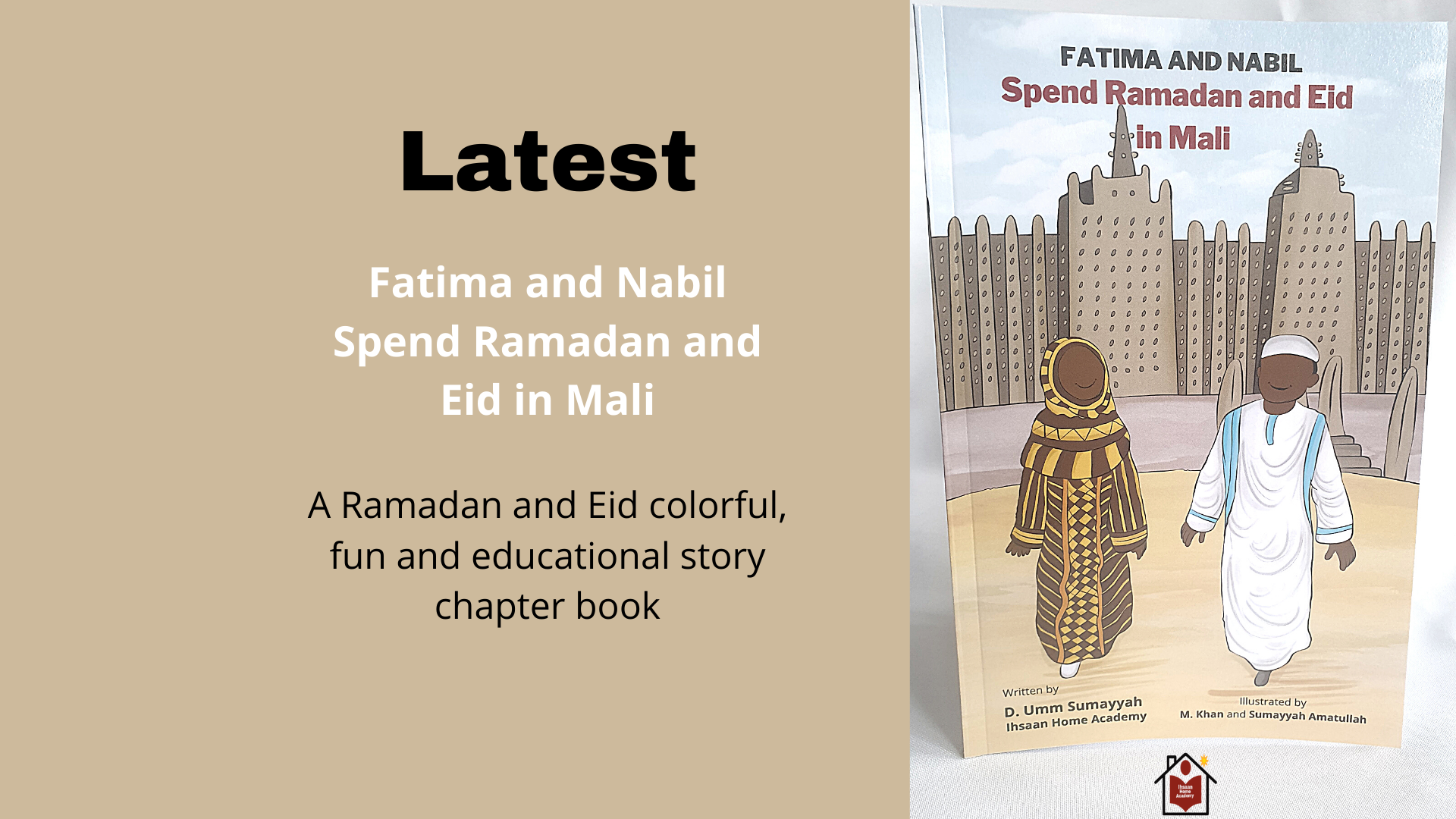﷽
I made a Ramadan journal for Muslim children titled 'My Mini Ramadan Journal' last year. I wanted to share it on my blog, but I got carried away with other things until days into Ramadan. Here comes another Ramadan, so I decided to take the opportunity to share it now. I hope it's not too late.
This is a simple, yet informative journal that children between the ages of 3 - 10 will enjoy in shaa Allah. Actually, it could be for children of any age. The little writing part can be done by the parent/educator when the child is too young to write.
Here is what the journal consists of:
1. Ayah about Ramadan
Before officially beginning using the journal, children are introduced to an ayah (verse) from the Qur'an that mentions the revelation of the Qur'an and more.
2. Countdown page
The countdown is for children to color-in each day of Ramadan that passes. It helps them keep track of their progress in the journal and of the days of Ramadan. It's also fun to look forward to coloring a box every day.
3. Thirty (30) pages of activities
There are thirty pages of activities, each dedicated to a day in the month of Ramadan. Each page has an empty box at the top, an image of what the activity is about below, a fun fact after that, and two lines for writing.
The first line is where children (or their parents) would write what they are grateful for. The next line is where they would make a du'a. The purpose of adding this part is to encourage Muslim children to actively think about the blessings in their lives, be grateful, and to practice turning to Allah first for everything they want in life.
4. Thirty (30) Ayat cards
I got this part of the activity from a blog called Parenthood Muslim Style. Click the name to be taken to the blog. You can download this part of the activity there. I use it in my activity a bit differently than the sister uses it.
Related Posts:
The cards basically have an Ayah on each and an image representing the Ayah. Each day of Ramadan, children search for the verse in the Qur'an. These cards can be used in many ways. It was a perfect fit for my activity and I didn't have to make new cards. May Allah reward the sister with the best of rewards for making these cards!
5. Laylatul Qadr section
After 20 days, there is a section with Ayat and ahadith about Laylatul Qadr. Children get to learn about this blessed night found in the last ten nights of Ramadan.
6. Eid Page
The last part of the activity is a page about the celebration of Eid.
It has Eid Mubarak and a du'a of Eid. Below, there's a space for children to write what they got for Eid as gifts and a place to write the gifts they plan on giving others.
How to Use this Activity
1. Prepare the activity by printing it and binding it into a book. Next, print out the 30-Ayat cards after downloading it from the blog, then cut them out into cards. Get coloring pencils, a pencil, and glue.
2. Start the journal by generally talking to your children about Ramadan. You can also read verses from the Qur'an, read ahadith, watch videos, etc.
3. One day at a time, mark the Ramadan day on the countdown page by coloring the corresponding box/number.
4. Glue the first Ayah card on the page for the activity of the day. It should be glued in the empty box. Search for the Ayah in the Quran (audio or book). Read it or listen to it, then read the meaning (translation, if needed).
5. Talk about the word of the day mentioned on the card.
6. Read the fun fact of the day and discuss.
7. Next, children should write about things they are grateful for and ask Allah for something through a du'a.
8. Once you reach the last ten days of Ramadan, read the information about Laylatul Qadr. Feel free to expand by doing many other things related to the specific topic.
9. After the 29 or 30 days of Ramadan, go to the Eid page and write the gifts received and the ones to be given.
10. Enjoy EID!
Goals
- To learn about Ramadan
- To practice searching for verses in the Qur'an
- To listen to the Qur'an and build a bond
- To learn new Arabic vocabularies from the Qur'an
- To learn fun facts and be informed
- To practice gratitude
- To practice remembering Allah and asking Him for everything
- To look forward to doing something productive every day of the month of Ramadan
- To make learning easy, straight forward, and FUN
I truly hope this mini journal will benefit everyone who downloads and uses it. Please, share this post with others so they too could benefit in shaa Allah. May Allah forgive us all for our sins, guide us, help us catch Laylatul Qadr, and make Ramadan successful for us.
Ramadan Mubarak!
__________________________
Umm Sumayyah is a mother of two and a former teacher who turned into a home educator after becoming a mother. She is also an editor and a researcher who loves collecting and sharing information on social matters, education, career, and entrepreneurship.
























